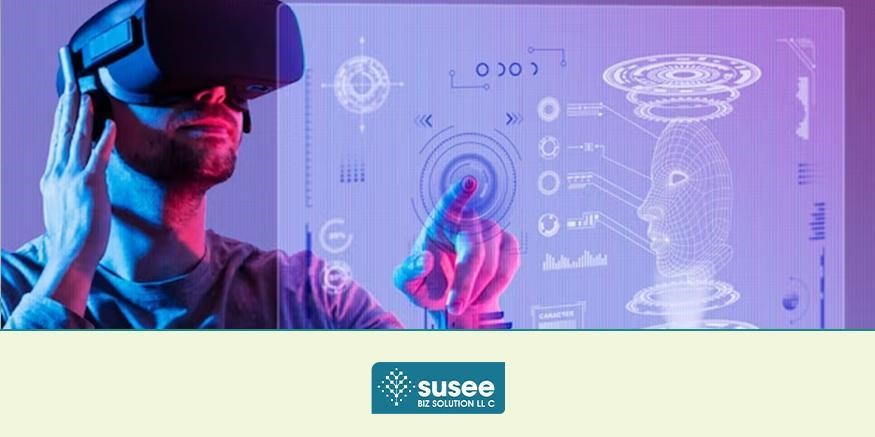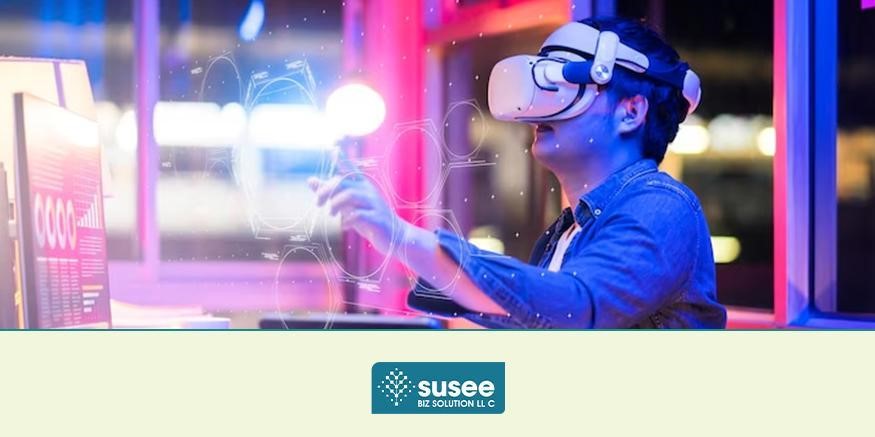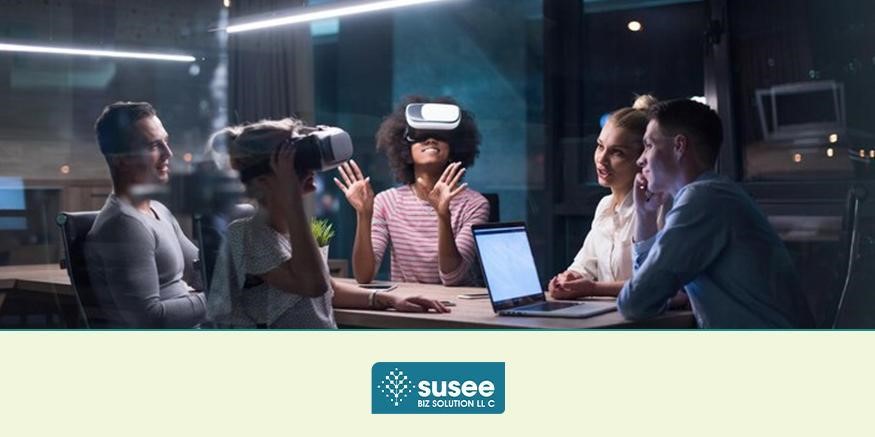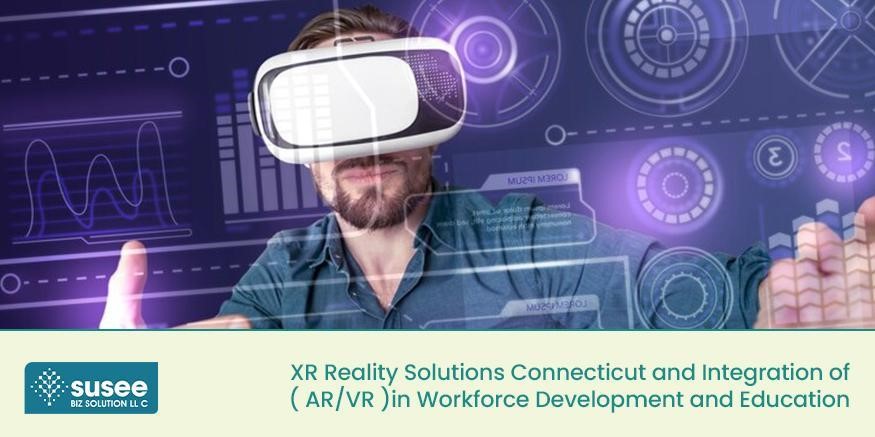Overview of XR Solutions in Workforce Development and Education
In the rapidly changing world of education and workforce development, using XR (Extended Reality) solutions is emerging as a transformative force, making a difference in the future of training and education. XR includes Augmented Reality (AR) and Virtual Reality (VR) technologies, providing interactive and immersive experiences that surpass traditional approaches. This introduction explores the profound impact of XR solutions in fostering the growth of businesses and enhancing educational practices.
Importance of Aligning Workforce and Management for Business Growth
XR solutions are essential in addressing workforce development demands and enabling businesses to connect the gap between vision and execution. The secret to unlocking the potential of a business unit is the seamless integration of management and workforce in the development strategy plan. Ensuring that employees are properly equipped to face the demands of growing businesses is vital, and XR technologies can be a way to achieve this goal.
Due to its innovative approach to adopting technology, Connecticut is now a hub for XR reality solutions. Incorporating XR reality solutions Connecticut shows the state’s commitment to remain at the forefront of technological advancements in education and workforce development. Companies and educational institutions in Connecticut adopting XR reality solutions aren’t just improving their efficiency, but are adding to Connecticut’s standing as an innovator in developing innovative technology.
Vision Alignment and Growth Strategy

To achieve continuous business growth, it is essential to align the vision of a business with a solid growth strategy. This synergy is even more important when you consider the crucial importance of a well-trained workforce in achieving the objectives set by a business unit. This section focuses on the intricate connection between the alignment of vision, growth strategies, and the vital role played by a proficient workforce.
Exploring the Connection Between Business Vision, Growth Strategy, and Workforce Alignment
A business’s vision is its guideline, describing its future goals and desired effect on the market. For this vision to translate into a tangible reality, it has to be closely tied to a growth strategy that outlines how to achieve organizational goals. This requires meticulous planning, market analysis and strategic decision-making in order to prepare the company for expansion and relevance within its field.
The Role of a Well-Trained Workforce in Achieving Business Unit Goals
But, the success of a growth strategy largely depends on the team’s skills. A skilled and well-trained team is the main driver to transform strategic goals into practical realities. Incorporating XR reality can be a game changer, giving employees an immersive and efficient training experience.
By embracing XR reality solutions Connecticut, businesses can get an edge over competitors by ensuring that their employees are aligned with the company’s goals and armed with the knowledge required to navigate the challenges of an ever-changing business environment.
Modern Training Approaches
In the ever-changing world of modern-day businesses, the need for quick and efficient training methods has never been greater. This section focuses on the need for efficient training methods and how using XR Reality Solutions Connecticut is changing the game with its unparalleled training results.
The Need for a Quick and Effective Training Process
Traditional training methods often need to meet the speed and agility demanded by modern businesses. The industry’s changing nature requires a quick learning approach that gives a complete knowledge of the subject. The new paradigm that is XR Reality Solutions steps in and redefines training methods by introducing engaging and immersive experiences.
Integration of XR Solutions for Enhanced Training Outcomes

Connecticut is on top of technological advances and recognizes the revolutionary effect of using XR Reality Solutions on modern techniques for training. The introduction of XR Reality Solutions Connecticut isn’t just a fad but a deliberate move taken by educational institutions to improve the effectiveness of their education programs. This technology-driven innovation perfectly fits Connecticut’s dedication to technological advancement and keeping ahead of technological advancements.
XR Reality Solutions Connecticut responds to the growing demand for more efficient learning. Utilizing the power of virtual and augmented reality learning becomes more enjoyable and results in higher retention rates and more effective use of the knowledge. The intense nature of XR training ensures that students grasp concepts rapidly and gain practical experience in virtual environments.
Key Components of XR
Extended Reality (XR) is an innovative technology that blends the virtual and physical worlds to provide users with immersive and engaging experiences. The effectiveness and efficiency of XR solutions are based on crucial components that play a role in creating a seamless, engaging environment. We will look at the key components of XR, including the hardware, platform software, and sensors.
Hardware Devices
Hardware devices play a pivotal role in delivering immersive XR experiences. These devices include a range of technology designed to appeal to the human body’s senses in various ways. In Virtual Reality (VR), headsets are the most important devices, providing users with an immersive digital experience. The most advanced VR headsets come with high-resolution displays, audio systems, and motion-tracking sensors that give users an experience of being in virtual worlds.
Augmented Reality (AR) utilizes various forms of hardware, including headsets, smart glasses, or mobile gadgets. The AR technology overlays digital images on the user’s view in real time and enhances their surroundings by adding extra information or interactive features. Sensor-loaded gloves, haptic feedback devices, and other peripherals make up a complete XR hardware ecosystem that allows users to interact with virtual objects physically.
Software Platforms
Software platforms form the foundation for XR applications, helping develop, install, and interact in virtual worlds. XR software consists of frameworks for development, tools for creating content, and application platforms designed for AR, VR, or Mixed Reality (MR). These platforms allow developers to create immersive experiences that range from educational simulations to corporate training apps.
To create immersive VR experiences, platforms such as Unity or Unreal Engine provide robust development environments that allow the creation of amazing and interactive media. ARKit and ARCore for iOS and ARCore for Android are well-known frameworks for AR application development that allow developers to use the power of mobile devices to create augmented experiences. Cross-platform applications contribute to the flexibility of XR applications, which ensures compatibility across various devices.
Sensor Technologies
Sensor technology is essential to XR and enables devices to detect and respond to the user’s actions and surroundings. In VR motion tracking, motion sensors track body and head movements and translate these into actions that correspond to the virtual world. They contribute to the feeling of being in the present and improve your overall experience.
In AR applications, sensors include cameras, depth sensors, and environmental sensors that can scan and interpret the actual environment. This enables AR devices to recognize the user’s surroundings and seamlessly overlay digital information. Furthermore, the haptic feedback sensors offer tactile sensations that enhance the user’s experience by mimicking the sensation of touching in both VR and AR environments.

XR Development and Implementation
Extended Reality (XR) development and implementation are a fast-growing technological frontier and offer revolutionary possibilities in various sectors. This article explores XR’s most important aspects, including content creation, Integration challenges, solutions, and some notable examples of use cases in the industry.
XR Content Creation
Making immersive content for XR is a multifaceted procedure that requires cutting-edge technology to create compelling and engaging experiences. XR content creation encompasses Virtual Reality (VR), Augmented Reality (AR), and Mixed Reality (MR), each of which requires specialized strategies. In VR, the content creators use 3D animation and modeling tools to create virtual environments. Unity and Unreal Engine are popular platforms with powerful tools to aid in the VR development of content. VR experiences typically involve intricate simulations, ranging from architectural walkthroughs to virtual learning scenarios.
AR content creation involves mixing digital elements with the real world. Developers use ARKit (iOS) and ARCore (Android) to bring digital objects into the user’s environment. This requires thorough spatial computing knowledge, allowing seamless interactions between digital and real-world components. Mixed Reality combines VR and AR aspects, allowing users to interact with digital media while being conscious of their surroundings. Microsoft’s HoloLens is a prime example of MR technology because it allows developers to build holographic apps that blend and interact with Reality.
Integration Challenges and Solutions
Despite the promises of XR, the integration into existing infrastructures can pose problems. Problems with compatibility, hardware limitations, and the requirement to provide user-friendly and intuitive interfaces are typical issues. Ensuring a seamless integration requires an understanding of the existing technology and a well-planned strategy. Hardware compatibility is a major problem, particularly in AR, where the devices range from smartphones to specialized glasses.
Developers must design apps compatible with various devices while ensuring an identical user experience. Making the connection between traditional hardware and new XR technologies is a constant issue that requires innovative solutions that allow seamless integration. User interfaces play a crucial aspect when it comes to XR adoption. The balance between intuitive interaction and complicated XR environments is a difficult job. Voice commands, gesture controls, and tactile feedback are all integral components that require refinement to increase users’ comfort and engagement.
Industry Use Cases
The applications of XR span across various industries, changing how companies operate and how individuals can experience content. In healthcare, XR assists with surgical simulations that allow medical professionals to perform procedures in a safe virtual space. In education, XR enhances learning through immersive experiences, ranging from virtual field excursions to interactive simulations of historical events.
Manufacturing uses XR to help train employees to learn about complicated machines in a virtual environment. Retailers use AR for interactive displays of their products that allow customers to see objects in their actual environment. Entertainment industries embrace XR to provide immersive gaming experiences that surpass the boundaries of traditional gaming. VR concerts and AR-enhanced movie promos demonstrate the potential of XR technology to revolutionize entertainment engagement.
Applications of XR Technologies in Manufacturing
In manufacturing, XR (Extended Reality) technologies have been embraced as revolutionary tools that are revolutionizing operations and increasing efficiency throughout the entire. This section focuses on the applications of XR technologies in the manufacturing industry, providing insight into how these technologies have transformed the manufacturing industry in Connecticut.
Examination of XR Technologies in Operational Aspects of Manufacturing Industries

XR technologies, including Augmented Reality (AR) and Virtual Reality (VR), are widely used in industrial manufacturing processes. The technologies can provide immersive experiences surpassing conventional methods, providing employees with live information, interactive training programs, and more efficient collaboration.
One of the most prominent applications of XR technology in manufacturing is the field of education. Virtual Reality simulations allow workers to experience realistic scenarios and facilitate hands-on learning without the requirement for physical equipment. This does not just enhance the capabilities of workers but also helps create safety by reducing the risk of accidents on the job.
Future Trends and Innovation
The future of Extended Reality (XR) technology offers exciting possibilities for education and workforce development as new emerging trends and innovations are set to revolutionize how we learn, train, and work. As we look forward to the future generation of XR technology in Connecticut, this section outlines the most recent trends likely to influence the future of Connecticut.
Workforce Development and Training
In the field of workforce development, XR technologies are expected to play a more prominent role. An emerging trend includes the integration of artificial intelligence (AI) with XR to create smart and adaptive simulations for training. This integration permits XR solutions to adjust content according to the individual’s learning patterns, increasing the effectiveness of the training programs.
Additionally, using XR to develop soft skills is growing in popularity. Virtual Reality simulations offer a secure and immersive setting to practice leadership, communication and interpersonal skills. This is a response to the increasing awareness that more than technical competence is needed and that soft skills are essential in achieving professional success.
Educational Innovations
In the world of education, XR technologies are reshaping traditional learning methods. A notable development is the growth of virtual reality classrooms, which provide students with interactive and immersive experiences. This method transcends geographic barriers and allows students to interact with the educational content as though they were physically present.
AR Making Strides in Education
Augmented Reality is progressing in education, with the trend towards interactive textbooks and learning materials. AR-enhanced textbooks overlay digital information on physical books, providing an engaging and interactive learning experience. This technology aligns with the trend towards a more student-centered and interactive learning approach.
Connecticut is a state that is recognized for its technological innovations and is on the cutting edge of adopting the latest developments in XR technology. The state’s determination to stay ahead of technological advances makes it a center for advancing XR technology in education and workforce development.
Conclusion
Connecticut pioneers XR Reality Solutions, transforming the workforce and education. Integrating AR and VR technology improves training efficiency in line with the state’s commitment to technological advancement and keeping ahead of the latest trends.




